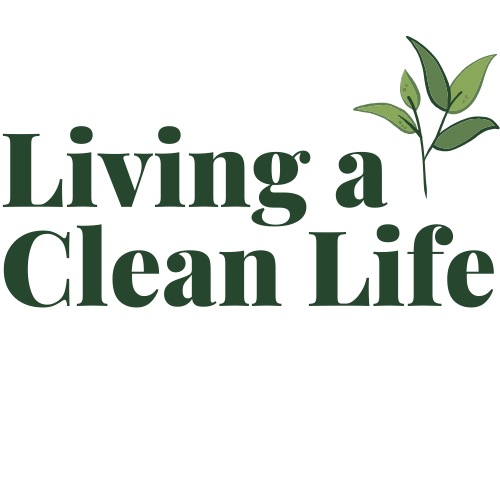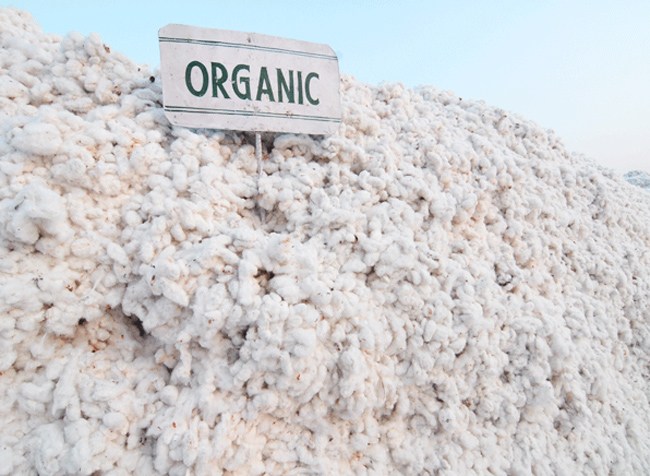Disclosure: We are reader-supported. If you buy through links on our site, we may earn a small commission. Learn more.
The general consumer is starting to understand the importance of what you eat and what you put on your body as far as cosmetics, and personal care product. So why isn’t anyone talking about a clean clothing movement yet, we should be, here is why…
From a health perspective, there are 8,000 synthetic chemicals that are part of the apparel manufacturing industry. These are chemicals that are known to be carcinogenic and endocrine disrupting and harmful to human health.
Am I suggesting that you throw out all your old clothes and buy only 100% organic cotton clothes? No, of course not. My point is just to educate you so in the future you may make more conscience decisions about the clothes you buy, to benefit your health and the planet. I personally own about 5 lounge outfits that are 100% organic cotton (which I have basically lived in during quarantine), organic cotton socks, sports bras, underwear, pajamas, and a few dresses that are 100% organic cotton.
Currently, my favorite company is called ‘MATE the label’. They are the only company I have come across with cute and comfortable organic clothes (more about this company and why I love them so much below), unfortunately they only sell clothes for women. For men, I recommend checking out Patagonia, my husband got a few things from them in organic cotton that he likes. If I were to recommend just a few changes to implement now, it would be to get organic cotton undergarments, pajama, and one or two lounge outfits.
I also bought some clothes from a company called PACT, but my impression was that their clothes are lower quality and I found the clothes to be a little uncomfortable . The only clothing I would recommend from this company is their sports bras and underwear. Coyuchi has some nice options too.
For our kids, we buy most of our clothes from Hanna Anderson, they offer a nice selection of 100% organic options, and their clothes are super cute.
The other point of this blog is not to scare you, but to acknowledge the fact that while it is important to reduce your exposure to toxins when possible, many that we face today are unavoidable. This is why (and I know I may be starting to sound like a broken record) it is so important to CLEANSE. Drink the 16 oz of celery juice in the morning, drink the heavy metal detox smoothie, cut down on your fat intake (all information from my previous posts). We are being exposed to so many toxins, that our body can not eliminate them all without the help of a cleanse. Specifically, the cleanses from Anthony William’s book “Cleanse to Heal”. In this book, he describes fungicides as one of the worst exposures we are up against today. Guess what? Most clothing today is laced with fungicides. Now, dry cleaning can be fungicide based too.
Fungicides
Fungicides contain a tremendous amount of copper (one of the heavy metals partly responsible for eczema and psoriasis). Fungicides get inside our brain, body, and liver. They break down the body’s immune system defenses and serve as food for pathogens.
This is why I ALWAYS wash new clothes before wearing them.

Conventional Cotton
I have talked about conventional cotton in my previous posts, and the fact that it is the most heavily sprayed crop. Most people think of cotton as “natural”, but the reality is that conventional cotton is grown with genetically modified seeds and sprayed heavily with Roundup (the primary ingredient is glyphosate, which is linked to cancer) and other toxic pesticides. These chemicals persist in the fabric even after manufacturing. Between the pesticides and herbicides, chlorine bleach, and toxic finishes, even “natural” fiber clothing isn’t so natural.

Chemicals used in apparel manufacturing
The following chemicals are used during various stages, from coloring fabrics to finishing pieces.
- Glyphosate- herbicide found in cotton, concern- carcinogenic and possibly linked to autism.
- Formaldehyde- used in wrinkle free/shrinkage, and dyes/prints- concern- carcinogenic
- VOCs- used in printing process- causes developmental and reproductive system damage, skin/eye irritation, liver and respiratory problems. Some VOCs are carcinogens.
- PFCS- used to make water resistant/stain repellant. Found on print, uniforms, outdoor clothing. They are bio-accumulative (build up in your bloodstream), are carcinogenic and toxic in the environment.
- Chlorine- used for whitening and stain removal, found in natural fiber/cotton processing. Causes asthma, respiratory problems.
- Flame retardants- used to stop clothes from burning, found in children's clothing, Neurotoxins, endocrine disruptors, carcinogens, bio-accumulative.
- Ammonia- used to make shrink resistance, found in natural fabrics, absorbed into lungs
- Heavy metals- used in dying, chromium VI is used in leather tanning and antimony is used to make polyester. It is highly toxic and can cause DNA/reproductive issues, damage blood cells, kidney, liver; environmental damage.
- Phalates/Plastisol- used in printing, they are endocrine disruptors.
Which companies are trying to do better?
Target released a chemical-reduction policy with the goal of full ingredient transparency (including fragrances) for beauty and cleaning products by 2020; by 2022 they will remove PFCs and flame retardants across their product lines. Other mission-driven brands that are very active in pursuing safer and more ethical manufacturing practices include Outerknown, Stella McCartney (both Kering brands), Patagonia, Mara Hoffman, Eileen Fisher, Prana, and Coyuchi. Truly transparent companies will make their fiber and chemical strategies easily available on their website.
More about MATE the label
What is good for you is good for the environment, a company I have come to love is called "MATE the label".
What is the definition of sustainability? The ability to be sustained, supported, and upheld. The quality of not being harmful to the environment or depleting natural resources, and thereby supporting long-term ecological balance.
Mate the label strives to be sustainable- what this means to them. The first thing they look at is their materials and whether or not they are CLEAN. Sustainable clothes are pesticide free/ non-GMO/ non-toxic, natural, certified, and can be recycled into new fiber. Not sustainable- synthetic, petroleum derived, carcinogenic, uses pesticides, can not be recycled into new fiber.
The second thing they look at, is their product harmful to humans along the supply chain. They think in a holistic way about people who come in contact with their product (farmers, people that separate and clean the cotton, fabric knitters, garment workers, and warehouse staff). They are concerned with what those people are breathing, touching, and absorbing when working with the materials.
The next thing they look at, are these materials coming from a renewable regenerative source or are they reliant on fossil fuels and derived from petroleum (60% of clothing on the market right now rely on fossil fuel). Organic crops are healthier for the soil and water systems, which enables farmers to continually harvest their crops in harmony with nature. Synthetic fabrics are made from petroleum which is a fossil fuel and is the largest contributor to the climate crisis. Conventional cotton farming depletes and degrades the soil to the point where the soil eventually dies.
The next part is, what is happening to garments after people are done with them. Natural fibers will naturally biodegrade and return back to mother earth without harming people or the planet. If it is synthetic and it is coming from fossil fuel and petroleum (essentially a plastic) it will end up in a land fill and off-gas harmful chemicals into the atmosphere. These synthetic materials will release microplastics into our water system and will live for 200+ years.
Mate the label is part of 3% of clothing brands made in the U.S. By having such a localized supply chain, they are able to significantly reduce their carbon footprint.

Why organic matters
- GOTS-certified products are free of heavy metals, chlorine bleach, formaldehyde, and aromatic-solvents, making it free of carcinogens and other toxic chemicals as well as many allergens.
- Certified organic cotton uses 71% less water and 62% less energy than conventionally produced cotton.
- 20 percent of fresh water pollution globally comes form textile treatment and dyeing.
- 60 percent of a cotton plant goes back into the food stream as for dairy or for oils for many packaged products.
- Conventional cotton accounts for 25% of the most harmful insecticides and 10% of the most toxic pesticides

